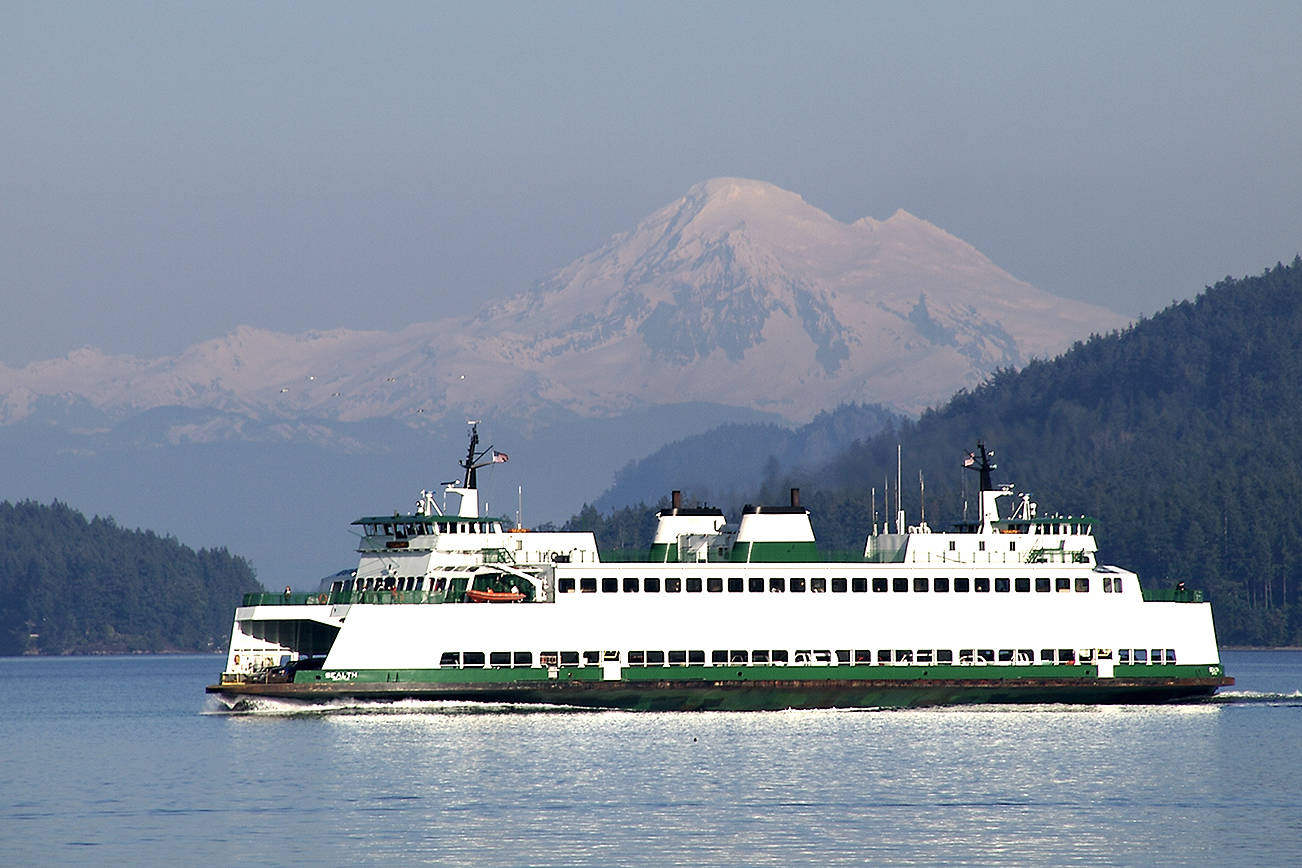Ferry patrons should expect the retirement of the Hyak in June, a 2.5 percent rise in fees in October and a new boat in nine years. Aging vessels, fare increases and hybrid ferries were the topics of discussion at a meeting hosted by Washington State Ferries at the Orcas Senior Center on May 15.
Aging vessels
“We’ve got a shaky system, we’ve got to stabilize it,” Ray Deardorf, WSF senior planning manager, said. “We want to keep building boats. We’ve got to, no not only build replacement boats but we’ve got to add to the fleet. … Then we can consider actually improving service and responding to growth.”
In 2018, Legislature allotted the money to keep the Hyak afloat until June 30 but refused to continue that funding through 2020, WSF Director of Government Relations John Vezina said. WSF’s long-range plan includes improvements through to 2040, Deardorf explained. The Anacortes-San Juan route will have a new, international certified Olympic-class vessel in 2028. By that time, most of the vessels currently servicing the islands will be retired along with the Hyak, including the Tillikum, Kaleetan, Yakima and Elwha. WSF’s plan for the next 20 years is to replace 13 vessels that need retiring and build 16, adding three more to the 22-boat fleet.
“As you know, ridership is going up. We’re up to almost 25 million passengers, and for Anacortes-San Juans, we’re at an all-time high,” Vezina said. “We desperately need new vessels.”
Vezina added that Legislature was reluctant to promise too many improvements with the potential reduction in transportation funding that is sitting on the horizon. In November, voters will decide whether they want to have $30 tabs for their car or an adequately funded transportation department.
“[If passed,] it’s going to be a really big hit to the transportation budget,” Vezina said.
Fare increases
WSF does not set the fare prices, according to Deardorf. It’s set by the transportation commission; WSF just suggests fares and the commission decides.
Ferries is suggesting a 2.5 percent increase in October as well as another 2.5 percent in October of next year.
There’s flexibility in how the money is raised, however, Deardorf explained. The Legislature directed the Transportation Commission to add a vessel replacement surcharge beginning May 1, 2020. This charge is not set to increase any more than 10 percent and may only be used for construction or purchase of ferry vessels.
Bicycle surcharges in 2018 brought in a total of $458,000 in revenue for WSF — the San Juans was the highest earner.
Two proposed options include the ORCA LIFT pilot program which would offset transportation costs for low-income residents — cutting the fare for that rider in half. An estimated 2.6 percent of all ferry trips would qualify for the program, according to WSF. That would result in a 1.3 percent annual revenue loss — approximately $2.4 million.
The other option is the Good To Go! pilot program which is a single account-based system similar to what is used on toll roads in the state. The goal of this program is to increase throughput at toll booths.
Reservation no-show fees may be raised to 100 percent of the one-way fare as a way to limit the number of no-shows, Deardorf said.
A WSF fare discussion is scheduled for 5:30 p.m. on Wednesday, May 29, in the council hearing room at 55 Second St. in Friday Harbor.
Hybrid ferries
“You’re going to see efficiencies, but you’ll only see a real benefit when it’s fully electric,” John Bamonte, deputy director of vessel engineering and maintenance for WSF, said.
According to Deardorf, the first hybrid-electric ferry is going to be ready by 2022. A hybrid vessel will still have two diesel engines on board, he explained, but it’ll be like a Prius and only use those engines as a backup if needed.
WSF’s goal is to electrify the entire fleet to reduce fuel usage, emissions, noise and costs of maintenance.
Other business
The panel, comprised of four ferries employees and two San Juan County Ferry Advisory Committee representatives, then allowed the audience to ask questions and give suggestions.
Included in the community input were inquiries about better discounts, reservations or staging options for permanent residents; streamlining the Anacortes booth bottleneck; and the necessity of the 30-minute rule.
One audience member asked about the Elwha — which just had $25 million of new steel put into it. In spring 2018, the Elwha was pulled out of service to repair the car deck which was rusted and eroding. That repair took most of the year to complete.
“It’s a boat that needs a lot of work,” said Vezina.
The Elwha is one of two boats allowed to operate internationally on the Anacortes-Sydney route, the other is the Chelan. Elwha, however, needs to return to the shop for more U.S. Coast Guard-required maintenance and will be out for eight weeks this summer, Vezina said.
“We’ll have our one service-relief vessel,” Vezina said. “So, it is highly likely that if anything goes out in these 50-year-old boats around the entire system, that we will have to downsize somewhere.”
For more information about WSF’s long-range plan, visit https://www.wsdot.wa.gov/ferries/planning/long-range-plan/the-plan.



